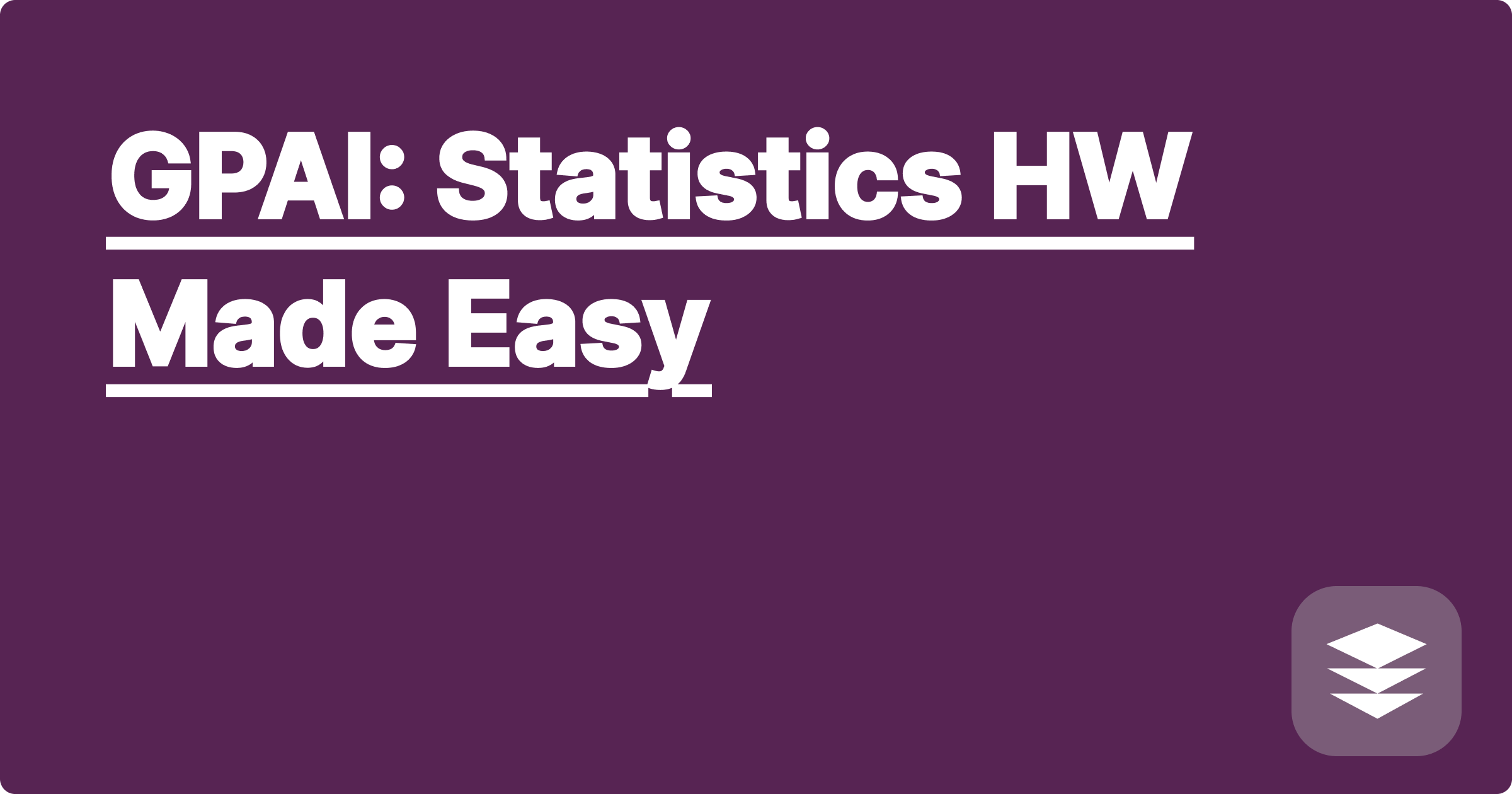
STEM fields often demand rigorous quantitative skills, particularly in statistics. Many students and researchers find themselves grappling with complex statistical problems, spending countless hours on homework assignments and data analysis. Artificial intelligence offers a powerful new approach to streamline this process, providing efficient and insightful solutions for statistical challenges. This shift towards AI-powered tools can significantly reduce the time spent on tedious calculations and allow for a deeper focus on understanding the underlying concepts and interpreting results.
This emerging paradigm is crucial for STEM students and researchers. Mastering statistics is essential for success in numerous STEM disciplines, but the sheer volume of work can be overwhelming. AI assistance can empower students to learn more effectively by providing step-by-step guidance and instant feedback. For researchers, AI can accelerate data analysis, enabling them to explore more complex hypotheses and generate novel insights. This transformative technology promises to reshape the landscape of STEM education and research, making statistics more accessible and empowering individuals to achieve greater success.
Statistics homework often involves a variety of challenging tasks. These can range from calculating basic descriptive statistics like mean, median, and standard deviation, to performing complex hypothesis tests and regression analysis. Students often struggle with understanding the underlying assumptions of different statistical tests and selecting the appropriate method for a given problem. Furthermore, the manual calculations involved can be time-consuming and error-prone, leading to frustration and hindering the learning process. The abundance of formulas and different distributions, such as the normal distribution, t-distribution, and chi-square distribution, can further complicate matters. Another common challenge is interpreting the results of statistical analyses and drawing meaningful conclusions from the data.
AI tools like ChatGPT, Claude, and Wolfram Alpha offer a revolutionary way to approach statistics homework. These platforms can provide step-by-step solutions to a wide range of statistical problems, explaining the underlying concepts and formulas involved. For instance, if a student is struggling with a hypothesis test, they can input the problem into ChatGPT or Claude and receive a detailed explanation of how to perform the test, including the appropriate test statistic, critical values, and p-value. Wolfram Alpha excels at performing complex calculations and visualizing data, making it an invaluable tool for tasks involving probability distributions, regressions, and other statistical analyses. These AI assistants can also help students understand the assumptions of different statistical tests and choose the most appropriate method for their specific research question.
Let's consider a scenario where a student needs to perform a t-test. First, they would clearly articulate the problem to the AI tool, specifying the null and alternative hypotheses, the sample data, and the significance level. Next, they would request the AI to perform the t-test. The AI would then calculate the t-statistic, degrees of freedom, and p-value. The AI would also provide an interpretation of the results, indicating whether the null hypothesis should be rejected or not based on the p-value and significance level. This step-by-step guidance allows students to understand the logic behind the t-test and apply it to other similar problems.
Consider a researcher investigating the effectiveness of a new drug. They have collected data on the blood pressure of two groups: one receiving the drug and a control group. They can use an AI tool like Wolfram Alpha to perform a two-sample t-test to determine if there is a statistically significant difference in blood pressure between the two groups. They would input the data for each group and specify the significance level. Wolfram Alpha would then calculate the t-statistic, degrees of freedom, and p-value. For example, the output might show a t-statistic of 2.5, degrees of freedom of 38, and a p-value of 0.015. This indicates that there is a statistically significant difference in blood pressure between the two groups at the 0.05 significance level.
Another example involves calculating probabilities using the normal distribution. A student might need to find the probability that a randomly selected variable from a normally distributed population falls within a certain range. They can use Wolfram Alpha to calculate this probability by providing the mean, standard deviation, and the desired range. For example, if the mean is 10, the standard deviation is 2, and the student wants to find the probability that the variable falls between 8 and 12, they can input this information into Wolfram Alpha, which would then calculate the probability.
Integrating AI tools effectively into STEM education and research requires a strategic approach. Students should focus on understanding the underlying statistical concepts rather than simply relying on the AI for answers. They should use AI to verify their own calculations and gain a deeper understanding of the problem-solving process. It's also crucial to critically evaluate the output generated by AI tools, ensuring that the results are consistent with the research question and the data. Researchers can leverage AI to automate repetitive tasks, freeing up time for more complex analyses and interpretation. However, it's essential to maintain transparency and document the use of AI in research to ensure reproducibility and maintain ethical standards.
Concluding, AI has the potential to revolutionize the way STEM students and researchers approach statistics. By providing step-by-step guidance, automating tedious calculations, and offering insightful visualizations, AI tools empower learners to grasp complex statistical concepts and accelerate research discoveries. Embracing these powerful tools strategically will pave the way for greater academic success and unlock new frontiers in STEM fields. Explore these tools, experiment with different applications, and discover how AI can enhance your statistical journey.